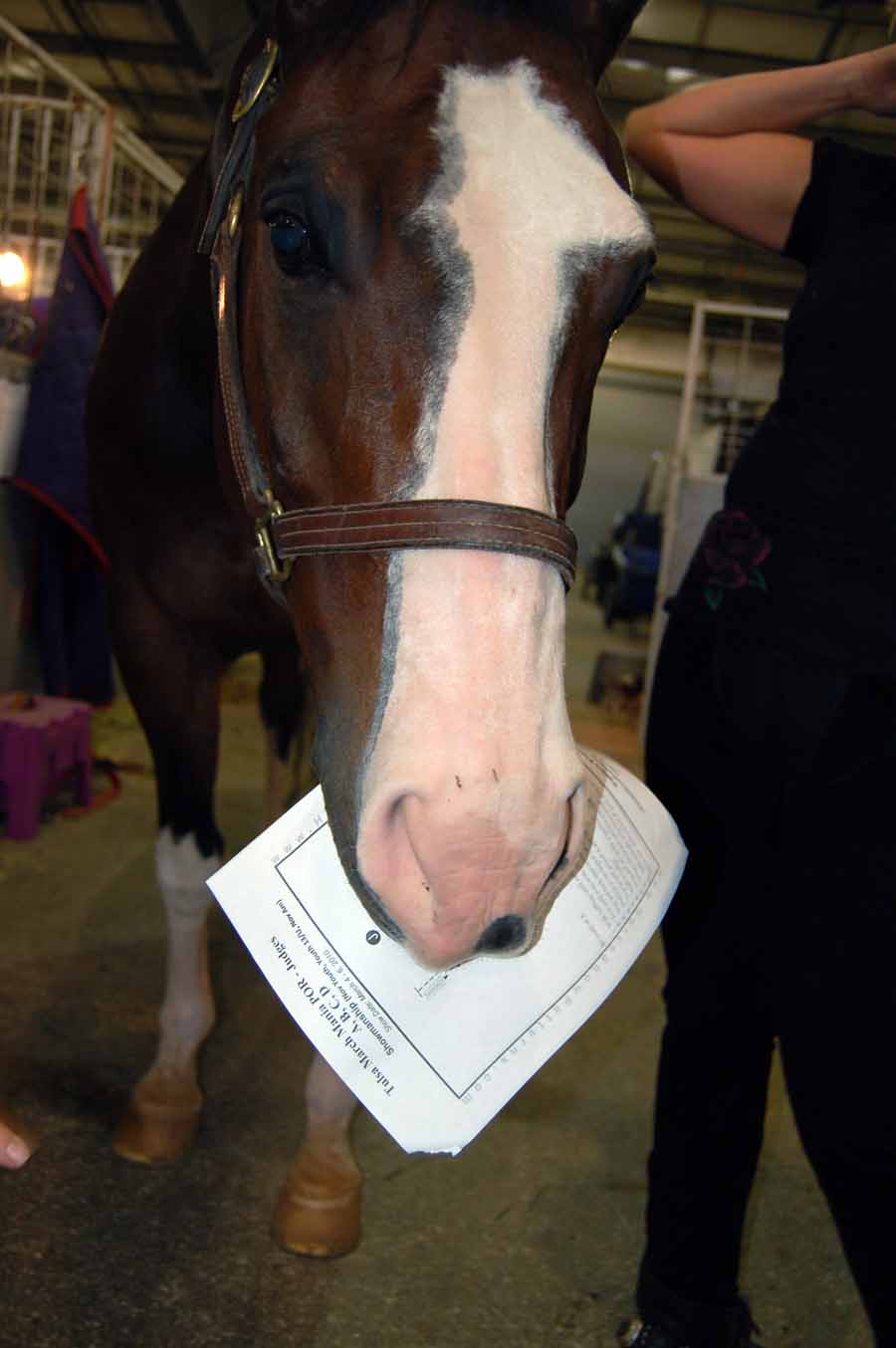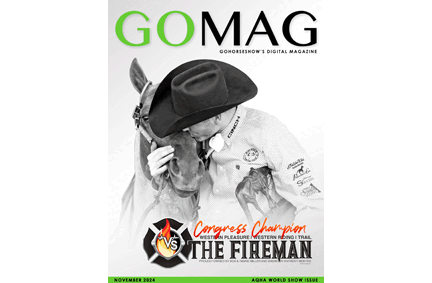There
is a trend lately toward making pattern books available at the shows for
all the
exhibitors. Some major shows have taken it one step further by posting
patterns on-line. People have varying opinions on the question…should
exhibitors have access to patterns in advance? Does it help or hurt
competitors? GoHorseShow.com got a wide variety of opinions from judges,
exhibitors, trainers, and show managers. We encourage our readers to
continue the
discussion by casting your opinion.
AQHA
judges Holly Hover, Jackie Krshka, and Stephanie Lynn all agree that they would
prefer the patterns be posted closer to the class times. “It is starting to
have many negative effects on the pattern execution–lot’s of anticipation from
the horses and horses being over prepared,” Hover said. “I always thought a
great part of the fun in the class was in getting the pattern and then knocking
it out in the arena—that’s what separated the ranks.”
Jackie
Krshka who puts on the prestigous Redbud Spectacular in Oklahoma City says that due to popular demand, she has given
in to the exhibitors requests for pattern books, but she is really not a fan of
exhibitors have the patterns beforehand. “I see all these trainers out in the
warm-up pen early in the morning drilling these horses repeatedly on the
patterns,” Jackie said. “I don’t think it is beneficial to the horses or
riders. They should be able to do a pattern on the fly, and there should be an
element of surprise.”
Multiple
World Champion and Congress Champion Stephanie Griffin has never been a
fan of
posting patterns ahead of time. “I think it levels the playing field and
really
benefits the people that need more time to prepare. The exhibitors that
have
worked hard to become a team with their horse so that they are prepared
for any
type of pattern that comes their way do not have the advantage they
should for
all their time and effort,” Griffin said. “Trainers have more time to
school
their students and horses as well. I’m sure the quality of the
performances is
higher overall, but, I just think it takes some of the anticipation and
excitement out of it.”
Stephanie
Lynn adds, “It allows them so much time to practice that there is little
substance to the test. The riders and horses have gotten so good that it is
difficult to challenge them. With so much advanced practice, the horses become
rather robotic in their moves and the riders do not have their skills tested,”
Lynn said. “I think that it is a compliment to our riders that we should
even have this debate. But, in the interest of keeping the challenge to the
event, I would prefer to see the patterns given closer to the competition.
Actually, I would love to see finalists being given the pattern one hour prior
to riding it, especially at the big shows.”
 However,
However,
AQHA judge and trainers John Briggs (and his wife Jill), Lisa Ligon, Cyndi Brown, Charlene
Carter, and amateur Kaleena Weakly prefer to have the patterns ahead of
time. As a judge, Carter tries
to get them to the show management so they can make them available to the
exhibitors. “I like this for different reasons. As a trainer, you sometimes
don’t get the opportunity (time or space) to practice the patterns if you have
several exhibitors or several different pattern layouts(novice, youth, amateur, select). Some
exhibitors take more of your time and that causes a delay for others,” Carter
said. “It is so costly now to show. If you can have better results
for your clients that make them happier, they feel more accomplished with their
horses and themselves. Getting the patterns ahead of time, help us prepare
our clients even more. And you know how hard it is to push through an arena
full of horses, all going in different directions! It could even be
considered a safety measure.”
Carter
adds, “Getting the patterns in advance makes it an even playing field for
all. Not a disadvantage for the working people that have to come in at the
last minute, or the horse that needs to be tuned-up for the forehand turn,
etc. You can’t fix everything at the last minute, so if it is a big show,
you have little time to make it happen. I think that on the whole, most horse’s
and exhibitors will get more detailed training. It will always be the most
dedicated horseman that wins the most. To consistently win, an exhibitor and horse
has to have communication between the horse and rider. Without that, it is
just pure luck. Even if you already have the pattern and have practiced it a
lot, it is a challenge to lay it out to perfection. How many
times as a judge or exhibitor have you seen that happen? Not many. So yes,
bring on the patterns!”
Amateur
Kaleena Weakly echoes the same sentiment. “I like knowing what they are and
visualizing my plan of attack,” Weakley said. “Plus, some shows are so crowded,
like the Congress, with not many areas to get good practice in with cones, and
no distractions. It is nice to have everything in order, and practiced before
you go to big shows like that. That way you aren’t stressed out and having to
take more days off of work, just because you are worried about getting
somewhere early enough to run through your patterns and be organized. Those
shows are too big and expensive to not be able to feel prepared and confident!”
GoHorseShow.com
would like your thoughts on the topic so please vote and comment below and let us know your opinion.








